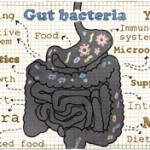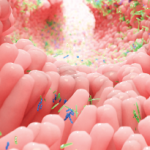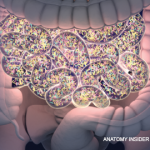New sequencing tools and experimental approaches have brought novel insights into the mechanisms behind autoinflammatory processes. Indeed, it is now possible to find and identify thousands of bacteria (and their function), providing an unprecedented level of detail never before witnessed. Animal models of RA have shown the capacity of specific commensal bacteria to activate proinflammatory cells, which in turn initiate and perpetuate deleterious effects in the joint. The clinical implications of these discoveries, along with the idea that humans harbor distinct enterotypes, open a new perspective in rheumatic and autoimmune research. Well-characterized studies utilizing DNA-parallel sequencing, shotgun analyses, and animal models to elucidate possible dysbiosis states in RA and related conditions are in early stages.23
If a distinct microbiota or enterotype is identified, it would then be possible to speculate whether a particular microbiome triggers or drives autoimmunity in genetically predisposed individuals. Identification of “pathogenic” commensal organisms could provide insights into the environmental triggers of diseases such as RA and lead to a new understanding of disease pathogenesis, perhaps leading to novel approaches for thereby. Proving causation, however, will require in-depth mechanistic studies involving “humanization” of mouse models to allow selective colonization with candidate bacteria and study of consequent host immune reaction to balance alteration. Perhaps van Leeuwenhoek’s animalcules were the answer all along.
And maybe, from time to time, the inhabitants of the microbiome, like Gulliver’s diminutive mortals described in Swift’s classic, may not tremble at the sight of such a prodigious creature.
Dr. Scher is clinical instructor of medicine at the New York University School of Medicine and director of the Microbiome Center for Rheumatology and Autoimmunity at NYU Hospital for Joint Diseases in New York. Dr. Abramson is professor of medicine and pathology and director of the division of rheumatology, New York University School of Medicine and NYU Hospital for Joint Diseases.
References
- Lederberg J, McCray A. ‘Ome sweet ‘omics–A genealogical treasury of words. The Scientist. 2001;15:8.
- NIH HMP Working Group, Peterson J, Garges S, Giovanni M, et al. The NIH Human Microbiome Project. Genome Res. 2009;19:2317-2323.
- Qin J, Li R, Raes J, et al. A human gut microbial gene catalogue established by metagenomic sequencing. Nature. 2010;464:59-65.
- Gregersen PK, Silver J, Winchester RJ. The shared epitope hypothesis. An approach to understanding the molecular genetics of susceptibility to rheumatoid arthritis. Arthritis Rheum. 1987;30:1205-1213.
- Klareskog L, Catrina AI, Paget S. Rheumatoid arthritis. Lancet. 2009;373:659-672.
- Stahl EA, Raychaudhuri S, Remmers EF, et al. Genome-wide association study meta-analysis identifies seven new rheumatoid arthritis risk loci. Nat Genet. 2010;42:508-514.
- Osler W. The Principles and Practice of Medicine, Designed for the Use of Practitioners and Students of Medicine. 6th ed. New York, London: D. Appleton and Company, 1905.
- Tilley H. Discussion on focal sepsis as a factor in disease. Proc R Soc Med. 1926;19:6-11.
- Warden CC. The toxemic factor in rheumatoid arthritis. Cal State J Med. 1909;7:299-301.
- Rothschild BM., Turner KR, DeLuca MA. Symmetrical erosive peripheral polyarthritis in the Late Archaic Period of Alabama. Science. 1988;241:1498-1501.
- Weisburg WG, Barns SM, Pelletier DA, Lane DJ. 16S ribosomal DNA amplification for phylogenetic study. J Bacteriol. 1991;173:697-703.
- Spor A, Koren O, Ley R. Unravelling the effects of the environment and host genotype on the gut microbiome. Nat Rev Microbiol. 2011;9:279-290.
- Arumugam M, Raes J, Pelletier E, et al. Enterotypes of the human gut microbiome. Nature. 2011;473:174-180.
- Ivanov II, Atarashi K, Manel N, et al. Induction of intestinal Th17 cells by segmented filamentous bacteria. Cell. 2009;139:485-498.
- Round JL, Mazmanian SK. The gut microbiota shapes intestinal immune responses during health and disease. Nat Rev Immunol. 2009;9:313-323.
- Kohashi O, Kuwata J, Umehara K, Uemura F, Takahashi T, Ozawa A. Susceptibility to adjuvant-induced arthritis among germfree, specific-pathogen-free, and conventional rats. Infect Immun. 1979;26:791-794.
- Bjork J, Kleinau S, Midtvedt T, Klareskog L, Smedegard G. Role of the bowel flora for development of immunity to hsp 65 and arthritis in three experimental models. Scand J Immunol. 1994;40:648-652.
- Taurog JD, Richardson JA, Croft JT, et al. The germfree state prevents development of gut and joint inflammatory disease in HLA-B27 transgenic rats. J Exp Med. 1994;180:2359-2364.
- Van den Broek MF, van Bruggen MC, Koopman JP, Hazenberg MP, van den Berg WB. Gut flora induces and maintains resistance against streptococcal cell wall-induced arthritis in F344 rats. Clin Exp Immunol. 1992;88:313-317.
- Abdollahi-Roodsaz S, Joosten LA, Koenders MI, et al. Stimulation of TLR2 and TLR4 differentially skews the balance of T cells in a mouse model of arthritis. J Clin Invest. 2008;118:205-216.
- Wu HJ, Ivanov I, Darce J, et al. Gut-residing segmented filamentous bacteria drive autoimmune arthritis via T helper 17 cells. Immunity. 2010;32:815-827.
- Ochoa-Reparaz J, Mielcarz DW, Begum-Haque S, Kasper LH. Gut, bugs, and brain: Role of commensal bacteria in the control of central nervous system disease. Ann Neurol. 2011;69:240-247.
- Scher JU, Ubeda C, Pillinger M, et al. Characteristic oral and intestinal microbiota in rheumatoid arthritis (RA): A trigger for autoimmunity? [abstract #1390] Arthritis Rheum. 2010;62(Suppl):S577-S578.



